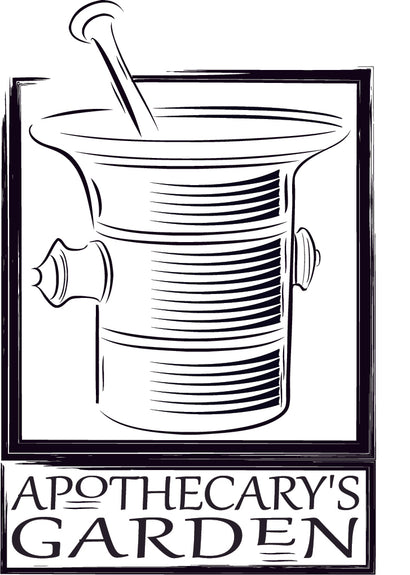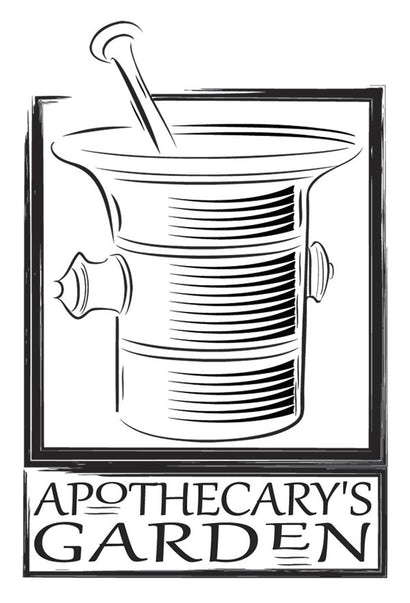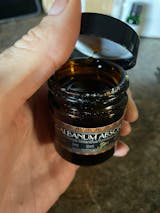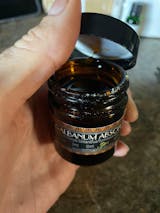

Galbanum Absolute
This listing is for Galbanum Absolute, sometimes referred to as a Resin Absolute. I prepare it from the fresh resin of the Ferula Gummosa plant which grows in Afghanistan
It is made from fresh semi-liquid resin and extracted with food-grade alcohol and no harsh chemicals.
The root of the Galbanum plant is scraped in the fall and for two or three weeks, the oozing resin is scraped off the plant in a semi-liquid form, packed and shipped in clay containers.
This liquid resin contains solid and liquid resin along with bits of plant material, dirt and other foreign objects.
I wash it with pure alcohol, and after macerating for 12 weeks, it is filtered, creating a crystal-clear reddish liquid tincture.
The tincture is then processed at a very low temperature under a vacuum to collect only the alcohol and leave behind all the aromatic compounds.
Galbanum absolute has a more intense, richer, deeper and complex aromatic profile than Galbanum essential oil since it contains all the aromatic compounds that distillation leaves behind.
Like many other resins, it is fixative in perfume and aromatic compositions.
Galbanum is one of the four essential ingredients of the Holy Incense mentioned in Exodus 30:34 and Ecclesiastes 24:14–15. It was one of the ingredients of Ketoret, the Jewish Holy Incense that was burned in the Tabernacle in the 1 st and 2nd Jewish Temple at Jerusalem.
It has been used for medicine since immemorial and is a component in ancient Egyptian Khyphi incense.
In traditional medicine systems, it is a Stimulant, expectorant, antispasmodic, antiflatulent, anti-inflammatory, antimicrobial and antiseptic. It is believed to stimulate digestion and enhance memory and brain function.
Galbanum is used in the making of modern perfumes and is the ingredient that gives the distinctive smell to the fragrances "Must" by Cartier, "Vent Vert" by Balmain, "Chanel No. 19" and "Vol De Nuit" by Guerlain.
The odour profile of Galbanum Absolute is ambery-green, sweet, balsamic, resinous with hints of freshness. It is one of a small number of green base notes of natural origin.
The family name Ferula refers to the sheath-like sleeve which "Clasps" the hollow stems of most of this family of perennial herbs. A term we still use today, ferrule.
Other members of the Ferula family include Ammoniacum, Asafoetida, Sumbul, (Muskroot), Giant Fennel and Ferula Hermonis, also known as Zallouh or Lebanese Viagra.
Dan
-
Materials: Ferula Galbaniflua, Galbanum, Alcohol.






